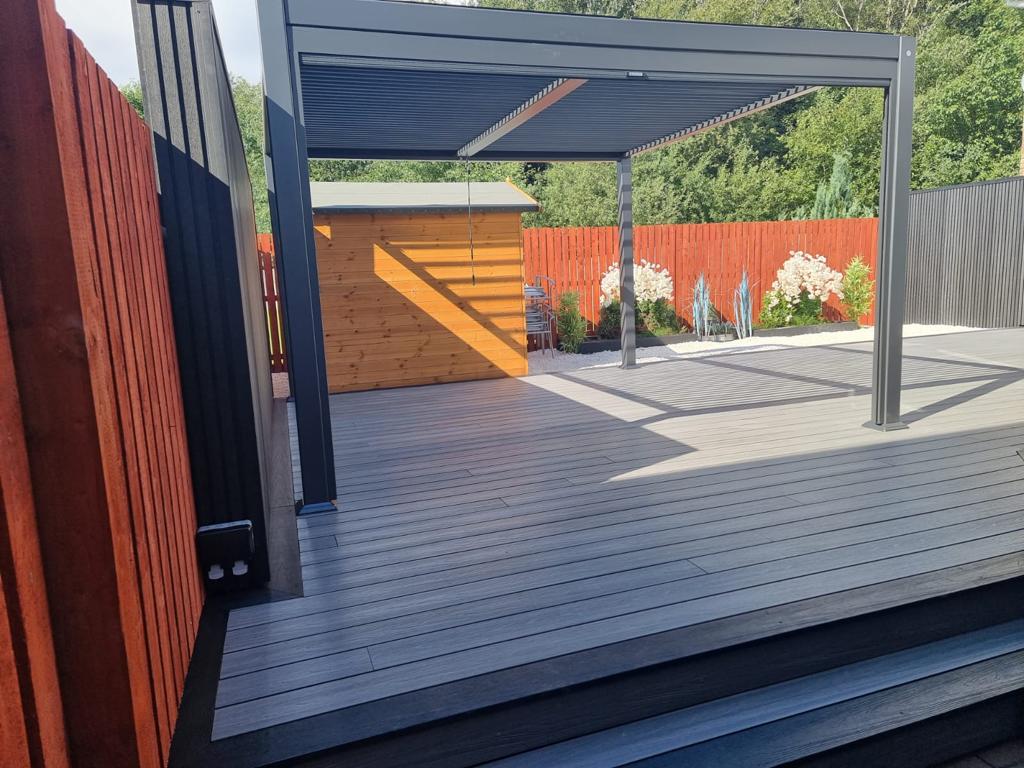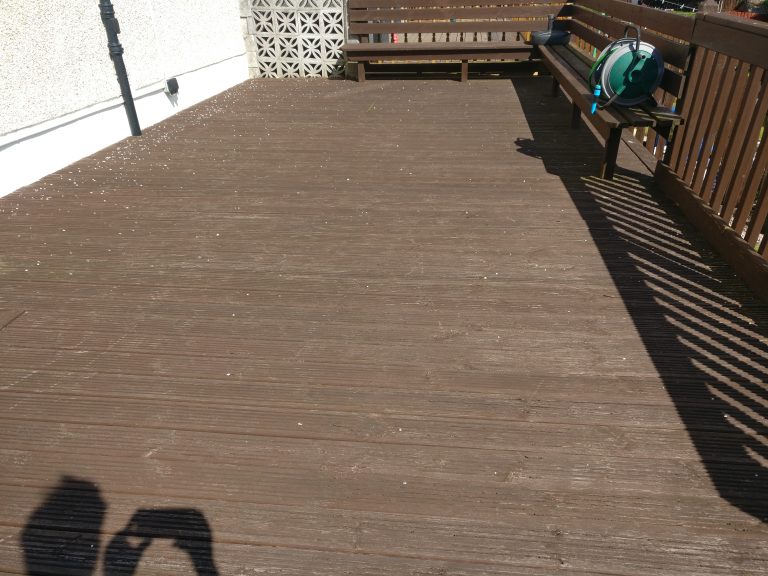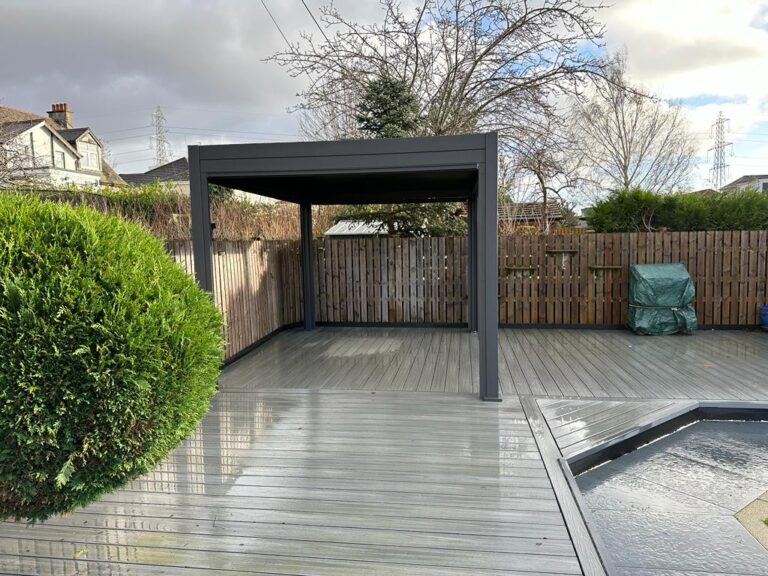Composite decking has gained popularity over the years as a versatile and low-maintenance option for outdoor spaces. Made from a combination of wood fibres and plastic, it offers several advantages, including durability and resistance to rot and insects. As with any material, there are also potential drawbacks to consider.
In this article, we will explore the disadvantages of composite decking, including its high upfront cost, potential slipperiness when wet, and susceptibility to fading and staining. We will also discuss alternative decking options and provide tips for maintaining composite decking to help you make an informed decision for your outdoor living space. Stay tuned to learn more about the pros and cons of composite decking.
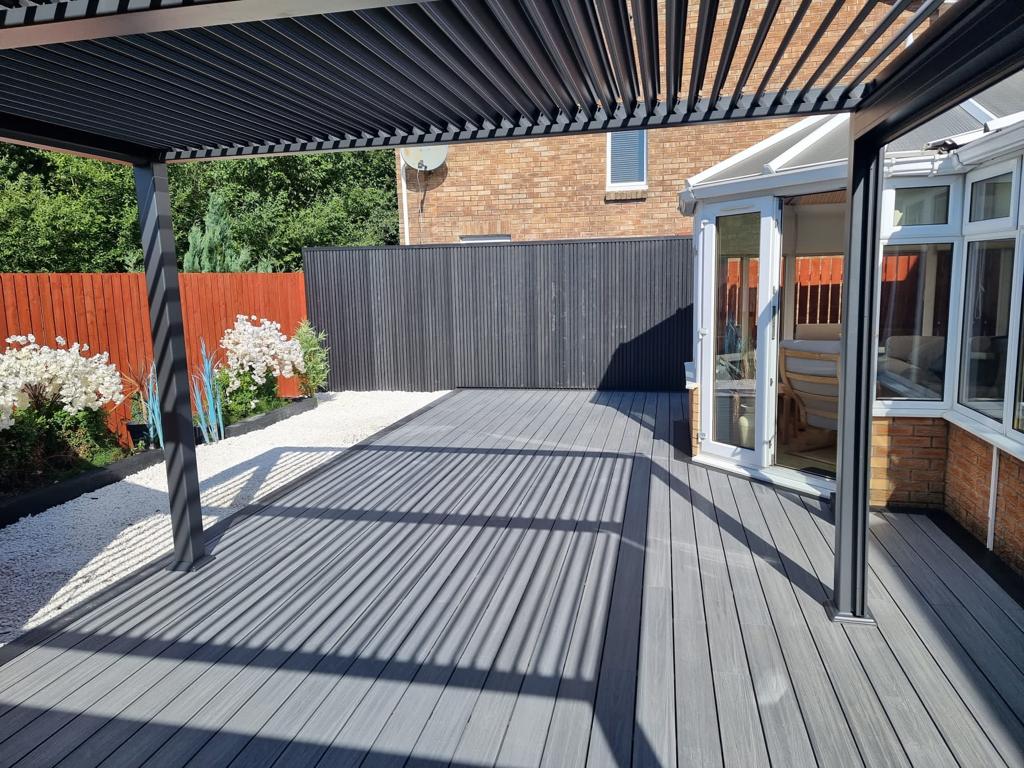
What Is Composite Decking?
Composite decking is a popular outdoor material renowned for its durability and resistance to weathering.
It is composed of a blend of recycled wood fibres and plastic, providing a sturdy and long-lasting alternative to traditional wood decking. Due to its composition, composite decking is highly resistant to rot, mould, and insect infestations, making it ideal for outdoor applications. Its ability to withstand harsh weather conditions, such as heavy rainfall, intense sunlight, and fluctuating temperatures, makes it a preferred choice for outdoor decks and patios, ensuring longevity and low maintenance for homeowners.
How is composite decking made?
Composite decking is manufactured using a blend of wood fibres and plastic, creating a composite board with enhanced properties and longevity.
During the manufacturing process, wood fibres and plastic are combined in a specific ratio, typically around 50:50, to form a homogeneous mixture. This mixture is then heated and extruded into board shapes, utilising high-pressure and high-temperature techniques to ensure a strong bond between the wood and plastic.
The boards are cooled and cut to the desired length before undergoing further treatments, such as embossing or coating, to enhance their visual appeal and durability.
What Are The Advantages Of Composite Decking?
Composite decking offers numerous benefits, including enhanced value, appealing appearance, and extended longevity compared to traditional wood decking.
It provides an attractive, low-maintenance alternative that doesn’t require regular staining or sealing. With a wide array of colours and textures, composite decking can mimic the look of natural wood while resisting rot, splintering, and warping. Its durable nature makes it ideal for high-traffic areas, and the resistance to fading and staining ensures a long-lasting, beautiful outdoor space.
Composite decking is eco-friendly and often made from recycled materials, making it a sustainable choice for environmentally-conscious homeowners.
Low Maintenance
One of the key advantages of composite decking is its low maintenance requirements, requiring minimal cleaning and care whilst often accompanied by extended warranty coverage.
This type of decking typically only requires periodic cleaning with soap and water to maintain its appearance, making it a hassle-free option for homeowners. Many composite decking manufacturers offer warranties that cover issues such as fading, staining, and structural integrity, providing added peace of mind for customers. With these benefits, composite decking stands out as a durable and practical choice for outdoor spaces, saving both time and effort in maintenance.
Hard-wearing
Composite decking is known for its exceptional durability, exhibiting high resistance to weathering and minimising environmental impact through its long lifespan.
The weather resistance of composite decking makes it suitable for various climates, from extreme heat to freezing temperatures, without warping or deteriorating. Its environmental impact is reduced as it is often made from recycled materials and does not require staining or painting, contributing to long-term sustainability. This long-lasting performance not only benefits homeowners by minimising maintenance and replacement costs but also helps to preserve natural resources by promoting a more sustainable and eco-friendly option for outdoor decking.
Resistant To Rot And Insects
Another significant advantage of composite decking is its resistance to rot and insects, mitigating common issues associated with traditional wood decking.
This makes composite decking an attractive option for homeowners seeking a low-maintenance and durable alternative to wood. With composite decking, there is no need for regular treatments or pesticides to ward off rot and insects, saving time and money in the long run. Composite decking is less susceptible to warping, splintering, and cracking, providing a more stable and safe outdoor space for families to enjoy.
Environmentally Friendly
Composite decking is recognised for its environmental friendliness, featuring sustainable attributes, recyclability, and reduced environmental hazards compared to alternative decking materials.
It is made from a blend of wood fibres, recycled plastics, and other sustainable materials, reducing the need for harvesting new timber and minimising waste. The recyclability of composite decking means that at the end of its lifecycle, the materials can be repurposed and reused rather than ending up in landfills.
The manufacturing process of composite decking often incorporates eco-friendly practices, such as using recycled materials and reducing emissions and environmental impact. These qualities make composite decking a popular choice for environmentally-conscious consumers seeking durable and low-maintenance outdoor decking solutions.
What are the disadvantages of composite decking?
Despite its numerous benefits, composite decking also presents certain disadvantages, including concerns related to cost, appearance, and maintenance requirements.
Whilst the initial cost of composite decking may be higher than that of traditional wood decking, it can also be prone to fading and scratching over time, which can affect its visual appeal. Maintenance requirements can include periodic cleaning and potential issues with mould and mildew. These factors may lead to additional costs and effort in maintaining the deck’s appearance, potentially making it less appealing compared to other decking options.
High initial cost
One of the primary disadvantages of composite decking is its high upfront cost, which may impact its affordability and installation expenses compared to other decking materials.
This cost factor can make composite decking less feasible for homeowners with strict budget constraints, given the initial investment required. It’s important to consider the long-term cost efficiency, as composite decking often requires minimal maintenance and lasts longer than traditional wood decking, potentially offsetting the higher upfront expenses.
When evaluating options, it’s crucial for homeowners to weigh the initial financial outlay against the long-term savings and durability, to make informed decisions about the overall lifetime cost of their decking material.
Can Be Slippery When Wet
One potential drawback of composite decking is its susceptibility to becoming slippery when wet, raising concerns about safety and slip resistance, especially in outdoor settings.
This slipperiness can pose a significant safety hazard, particularly in areas prone to wet weather or near pool decks where water accumulation is common. It is important for homeowners to carefully consider the slip resistance of their decking materials to prevent potential accidents. Incorporating slip-resistant features into the composite decking, such as textured surfaces or specialised coatings, can help mitigate this risk and provide a safer outdoor environment for families and guests.
Prone To Fading And Staining
Composite decking is prone to fading and staining over time, necessitating maintenance efforts to prevent colour fading and address cleaning requirements for preserving its appearance.
This issue can significantly impact the visual appeal of outdoor spaces and lead to increased maintenance needs. Regular care and cleaning to protect against staining and discolouration are essential in preserving the longevity and aesthetics of composite decking. Implementing strategies such as using specialised cleaning products designed for composite materials and applying UV protectants can help mitigate colour fading and maintain the deck’s original vibrant appearance. By staying proactive in addressing these challenges, homeowners can ensure that their composite decking continues to enhance their outdoor living experience for years to come.
Not As Natural Looking As Wood
A potential drawback of composite decking is its aesthetic difference from traditional wood decking, as it may not offer the same natural appearance and visual appeal as wood materials. Composite decking often lacks the warm, natural grain patterns and variations that are characteristic of wood. While some manufacturers have made significant strides in replicating the look of real wood, composite decking can still be identified by its distinct engineered appearance.
On the other hand, natural wood decking showcases a unique charm and character, with its organic texture, rich colours, and the natural ageing process, which can be an appealing feature for those seeking a more traditional look for their outdoor spaces.
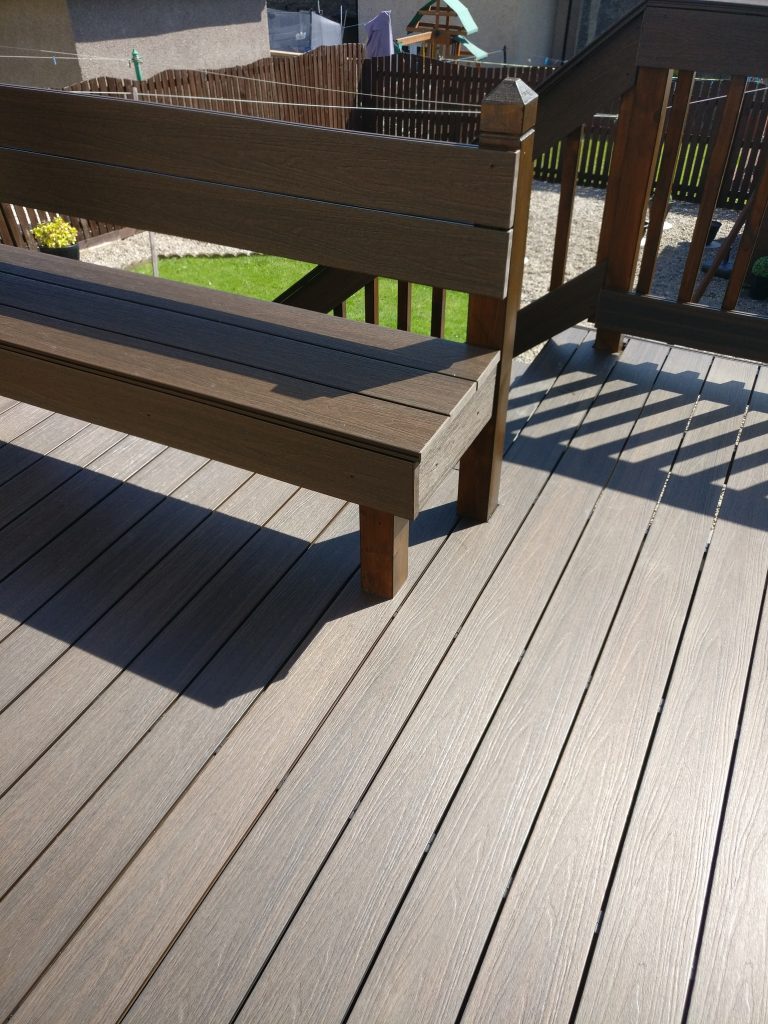
What are the alternatives to composite decking?
Several alternatives to composite decking exist, including traditional timber options, PVC decking, and aluminium decking, each with distinct characteristics and suitability for outdoor use.
Timber decking offers a timeless and natural aesthetic, requiring regular maintenance to retain its appearance and structural integrity.
On the other hand, PVC decking provides low maintenance and high durability, making it resistant to mould, mildew, and rot.
In contrast, aluminium decking delivers exceptional strength and longevity, suited for high-traffic areas and harsh weather conditions.
Each option presents unique benefits and considerations, allowing homeowners to choose the most suitable material for their outdoor living spaces.
Pressure-Treated Wood
Pressure-treated timber is a common alternative to composite decking, offering outdoor durability while requiring attention to prevent warping and splintering over time.
It is known for its resistance to outdoor elements due to chemical treatment, making it a preferred choice for outdoor structures. Without proper maintenance and sealing, pressure-treated timber can be susceptible to warping and cracking. Over time, if not maintained regularly, the risk of splintering increases, which can pose safety concerns, especially in high-traffic areas.
Despite these potential challenges, pressure-treated timber remains a cost-effective and versatile option for outdoor decks and structures.
Cedar Or Redwood
Cedar and redwood are natural wood alternatives to composite decking, prized for their natural beauty, longevity, and resistance to outdoor elements.
Their visual appeal lies in the rich, warm tones and distinct grain patterns that add a touch of elegance to any outdoor space. Both cedar and redwood boast impressive durability, with natural oils and compounds that make them naturally resistant to rot, decay, and insect damage, making them ideal for withstanding the demands of outdoor conditions. These characteristics make them popular choices for decking, fencing, and outdoor furniture that can stand the test of time with minimal maintenance.
PVC Decking
PVC decking presents an alternative material choice to composite decking, known for its low maintenance requirements and often accompanied by extended warranty coverage.
It is composed of polyvinyl chloride, offering exceptional durability and resistance to mould, mildew, and staining. PVC decking requires minimal upkeep, such as simple cleaning with soap and water, compared to the periodic refinishing often needed for traditional wood decks. Many manufacturers also provide substantial warranty coverage, ensuring peace of mind for homeowners. These attributes make PVC decking an attractive option for those seeking a long-lasting, low-maintenance alternative to composite materials.
Aluminium Decking
Aluminium decking offers an alternative material option with excellent weather resistance, minimal heat retention, and potential recyclability, showcasing unique properties for outdoor applications.
This type of decking is known for its ability to withstand harsh weather conditions, standing up to heavy rain, snow, and UV exposure without warping or rotting. Its heat-dissipating properties make it comfortable to walk on even in scorching temperatures, making it an ideal choice for sunny outdoor spaces. What’s more, its recyclability makes it an eco-friendly option, appealing to those seeking sustainable building materials for their outdoor projects.
How To Maintain Composite Decking?
Proper maintenance of composite decking involves regular cleaning, mould and moisture prevention, and prompt repairs to address any damages and ensure its long-term performance.
Regular cleaning of composite decking is essential to remove dirt, debris, and stains that can accumulate over time. Mould and moisture prevention can be achieved by ensuring proper ventilation and drainage, as well as using mould-inhibiting cleaning products. Addressing any damages promptly is crucial to prevent further deterioration, and this includes fixing scratches, cracks, or warped boards. By following these maintenance practices, you can uphold the durability and aesthetic appeal of your composite decking for years to come.
Regular Cleaning
Regular cleaning is essential for maintaining the appearance and longevity of composite decking, requiring careful care and attention to prevent the buildup of mould, mildew, and stains, causing the decking to lose its original lustre and colour.
By incorporating routine cleaning practices such as sweeping, washing with a gentle soap solution, and using a soft-bristled brush for stubborn stains, homeowners can preserve the beauty and integrity of their composite decking. Regular cleaning not only enhances the aesthetic appeal but also contributes to the overall durability and performance of the decking material.
Avoid Harsh Chemicals
When cleaning composite decking, it is crucial to avoid the use of harsh chemicals, as they can potentially impact the environment and the material’s long-term integrity.
Instead, consider using gentle cleaning agents that are environmentally friendly and designed specifically for composite decking. These products are not only effective in removing dirt and grime but also minimise the risk of harm to surrounding plants and wildlife.
Regular maintenance and care, such as sweeping debris and promptly addressing stains, can prolong the lifespan of your composite decking while reducing the need for intensive cleaning in the future.
Prevent the growth of mould and mildew.
Preventing mould and mildew growth is crucial for maintaining the integrity of composite decking, necessitating proactive measures to minimise moisture accumulation and potential mould development.
This can be achieved by regularly inspecting and addressing any sources of water accumulation, such as improperly levelled surfaces or inadequate drainage. Practising proper maintenance, including regular cleaning with mould-inhibiting solutions, can significantly reduce the potential for mould and mildew formation.
Ensuring adequate ventilation and airflow around the decking area also plays a key role in preventing moisture build-up. Implementing these strategies not only preserves the aesthetic appeal of the decking but also extends its longevity and durability.
Repair any damages promptly
Promptly addressing any damages in composite decking is essential to uphold its durability and long-term performance, requiring timely repairs to mitigate potential issues.
Regular maintenance and prompt repairs are vital in ensuring that the composite decking withstands environmental elements and regular usage. Neglecting repairs can lead to further deterioration, affecting not only the appearance but also the structural integrity of the decking. By addressing issues promptly, homeowners can prevent more extensive damage and maintain the decking’s longevity and aesthetic appeal.
Scheduling regular inspections and acting swiftly upon any signs of wear or damage is integral to preserving the decking’s pristine condition and maximising its lifespan.

